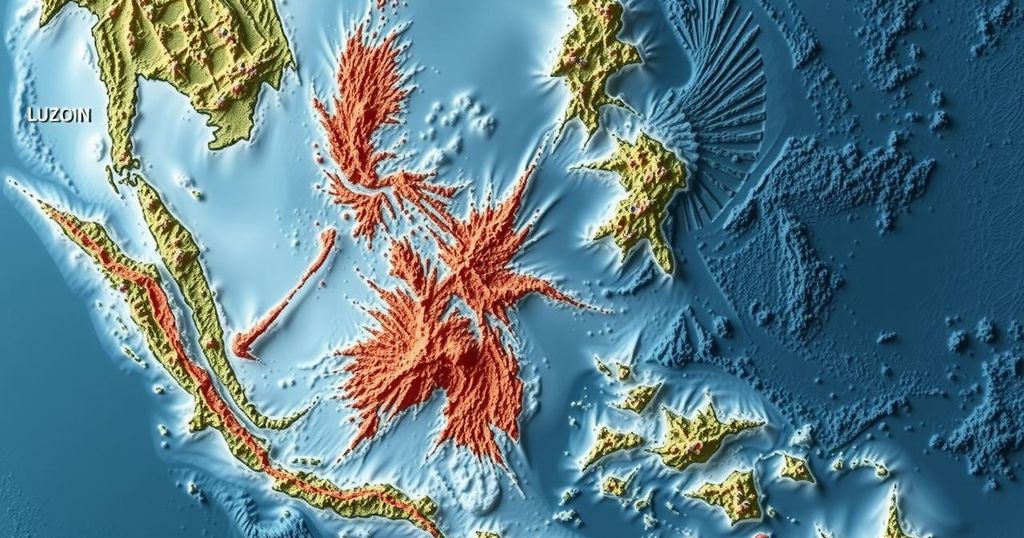World news
AFRICA, ASIA, BANGUI, CENTRAL AFRICAN REPUBLIC, EARTHQUAKE, EARTHQUAKES, GERMAN RESEARCH CENTRE FOR GEOSCIENCES, GFZ, ILOCOS, ILOCOS PROVINCE, LUZON, NATURAL DISASTERS, OCEANIA, OF FIRE, PACIFIC OCEAN, PHILIPPINES, PHIVOLCS, RING OF FIRE, SHALLOW EARTHQUAKE, TAJIKISTAN, VANUATU
Michael Grant
0 Comments
5.6 Magnitude Earthquake Rattles Luzon, Philippines; Aftershocks Expected
A 5.6 magnitude earthquake struck Luzon, Philippines on December 30, 2024. The tremor caused concerns for aftershocks but was not expected to result in major damage, as reported by GFZ and Phivolcs.
On December 30, 2024, a 5.6 magnitude earthquake was recorded in Luzon, Philippines, as confirmed by the German Research Centre for Geosciences (GFZ). The tremor occurred at a depth of 10 kilometers (6.2 miles) and primarily affected the northern town of Bangui in Ilocos province, according to the Philippine seismology agency, Phivolcs. Although the agency does not anticipate significant damage, they warned that aftershocks are likely due to the earthquake’s shallow nature, typical of seismic activities in the region.
The Philippines is situated along the Pacific Ocean’s “Ring of Fire,” a region notorious for its high levels of seismic activity and volcanic eruptions. As a result, earthquakes are frequent occurrences in this area, with varying magnitudes and impacts. The country’s geological characteristics make it particularly prone to shaking, leading to ongoing monitoring and preparedness initiatives by local agencies such as Phivolcs.
In summary, the 5.6 magnitude earthquake that struck Luzon highlights the ongoing seismic activity in the Philippines, a region known for its vulnerability to earthquakes. While no significant damages are anticipated, potential aftershocks serve as a reminder of the earthquake’s shallow depth and the necessity for continued monitoring and preparedness within this seismically active area.
Original Source: www.hindustantimes.com




Post Comment